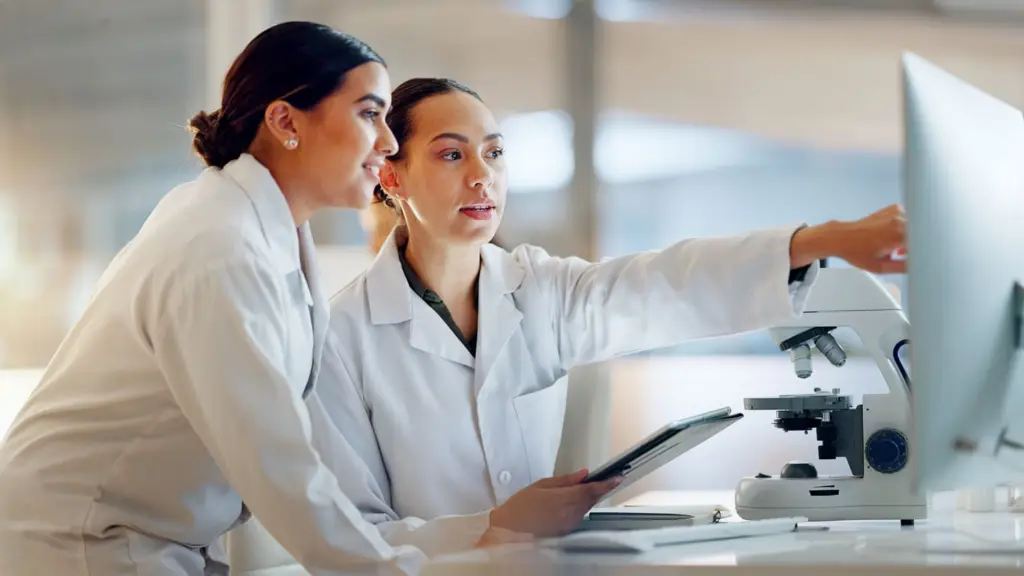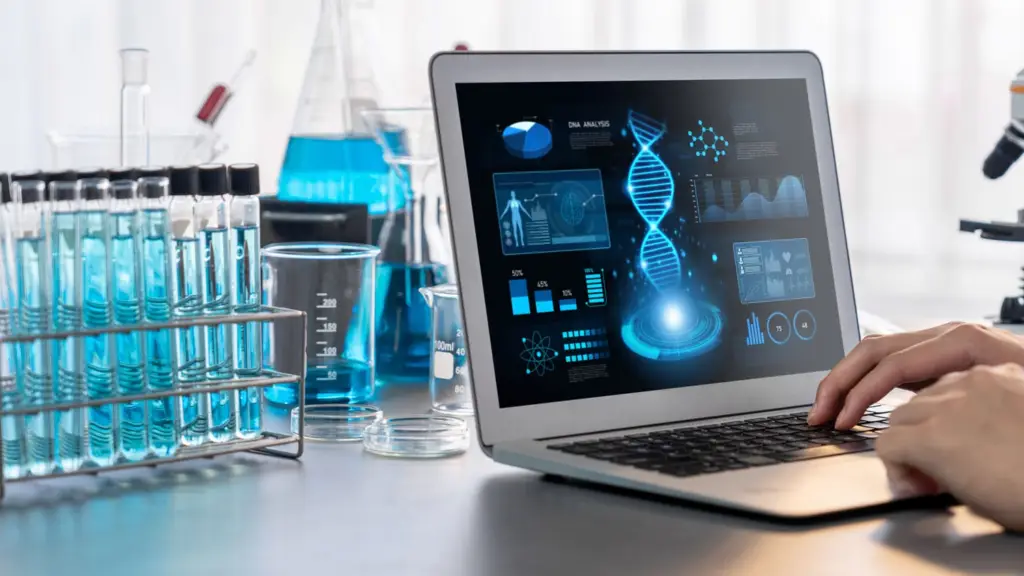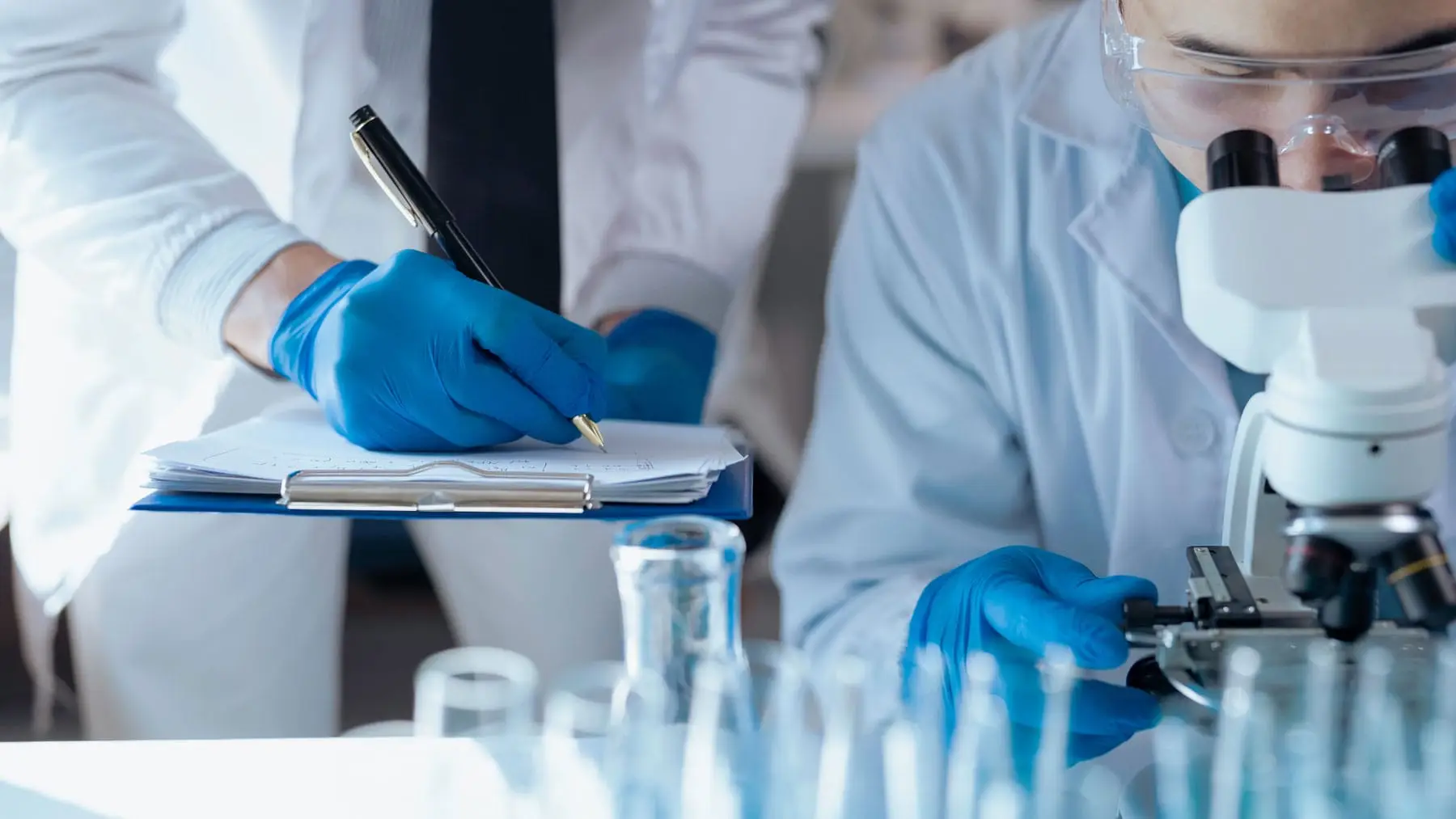Over the decades, Laboratory Information Management Systems (LIMS) have improved and streamlined laboratory management and record keeping. Initially designed to address the challenges of manual tracking and disorganized data, it is now a comprehensive tool that manages nearly every aspect of laboratory workflows. LIMS continues to evolve, meeting the needs of modern facilities by managing workflows, analyzing data, tracking samples, and scheduling equipment maintenance. The history of LIMS is complex and remains a critical part of any modern laboratory. In this blog post, we dig deeper into the history of LIMS and the many functions it provides for software-based solutions.
History of LIMS
The history of LIMS perfectly illustrates the ongoing evolution of technology in laboratory settings. Since its inception many years ago, LIMS has revolutionized how laboratories track and manage data, samples, and workflow. From the early days of basic record keeping to today’s advanced, cloud-based solutions, the history of LIMS demonstrates the growing complexity of laboratory operations and the increasing importance of LIMS to ensure accuracy, compliance, and efficiency.
From Manual Records to Digital Solutions
Before the implementation of LIMS, laboratories relied primarily on manual record-keeping using paper-based logbooks and handwritten samples and associated data. This process of keeping records was time-consuming, difficult to manage, and prone to errors. The need for an efficient lab data management system arose. In 1982, the first LIMS systems were introduced to help automate reporting functions. This innovative automation offered reporting tools to laboratories and stored data on a central computer. These early systems required significant customization in order to meet a specific laboratory’s needs regarding their workflow and reporting.
As the proliferation of the personal computer evolved, subsequent updates allowed LIMS laboratory software providers to offer an ever-expanding range of services and applications. Demand quickly took off as laboratories across the country and the world started to see the many benefits of LIMS systems. By the end of the 1980s, LIMS systems were offering centralized data storage solutions and automated reporting features. They were even evolving to meet the needs of other specific industries and sectors, such as healthcare and drug development.

Key Innovations
The early years of LIMS were marked by key innovations that gradually transformed how laboratories managed data, tracked samples, and streamlined workflows. After addressing the inefficiencies of manual, paper-based record-keeping, several key innovations were developed.
- Sample Tracking – The digital automation of sample tracking helped laboratories log key information such as sample ID, date of receipt, testing status, and even storage conditions.
- Data Storage and Management – As laboratory testing inevitably becomes more complex, there developed a need for better data management and storage solutions. LIMS innovations enabled labs to store large amounts of data securely in digital form, helping to reduce the clutter of paper records and making it easier to retrieve and manage data. Centralized data storage improved accessibility and integrity while eliminating the inefficiencies of paper-based filing systems.
- Laboratory Instrument Integration – In the 1980s, LIMS started integrating laboratory instruments, allowing for the automation of data collection from equipment such as spectrophotometers, balances, and chromatographs. This eliminated the need for manual data entry while speeding up the testing process and reducing errors.
- Quality Control and Sample Management – Over time, LIMS evolved to include sample management features in the 1990s, helping laboratories manage data and track the status of samples, reagents, and consumables. It made it possible to monitor the quality and expiration date of reagents, track the usage of consumables, and even automate reordering processes, eventually improving efficiency, reducing waste, and helping labs maintain a supply of essential material without overstocking or running out of crucial items.
- Multi-Site Capabilities – As laboratory operations became more complex, LIMS began to support networking and multi-site capabilities. This allowed multiple laboratories within an institution or laboratory network to access and share data in real-time. It also permitted laboratories to collaborate seamlessly, ensure consistent data management, and share results.
Current State of LIMS
Over 40 years after their inception, LIMS are considered an essential part of every laboratory. With rapid advancements in technology, functionality, and integration, today’s LIMS are powerful systems that improve the operations of laboratories across various industries. Today’s LIMS have better scalability and user-friendly interfaces, as well as robust data management, workflow automation, and regulatory compliance features.

Modern Advancements in LIMS
LIMS systems have come a long way from their humble beginnings as simple storage and retrieval devices. These advancements have been developed due to the integration of cutting-edge technologies, new methodologies, and industry demands for systems that help them stay more compliant. Some of the newest modern advancements in LIMS include:
- Cloud-Based LIMS – Cloud computing has made LIMS more scalable, flexible, and cost-effective. They allow laboratories to access their data and workflows from any location, which helps facilitate remote work, collaboration, and global data sharing. They also effectively remove the need for expensive on-site infrastructure and maintenance.
- Real-Time Processing – Data analytics tools enable real-time data processing, visualization, and interpretation. These analytics can provide immediate insights into laboratory operations, sample trends, equipment performance, and more. Algorithms are used to detect anomalies, identify patterns, and provide predictive analytics, helping labs anticipate potential issues and make proactive decisions.
- Artificial Intelligence (AI) and Machine Learning (ML) Integration – The integration of AI and ML technologies helps automate decision-making processes and optimize laboratory workflows. AI can analyze vast amounts of data for error detection, predict maintenance needs, and suggest process improvements based on historical data.
- SaaS LIMS – As a leading trend in the LIMS industry, SaaS-based LIMS laboratories enjoy the many benefits of easy access, seamless scalability, and reduced IT infrastructure costs. With a shift towards more agile and cost-effective solutions, labs can focus on their core activities without having to manage complex IT systems.
- Integration with IoT and Automation – The integration of Internet of Things (IoT) devices and automation systems continuously changes the ways data is collected and managed in laboratories. LIMS can seamlessly integrate with IoT devices and instruments, enabling real-time data monitoring and analysis.
- QR Codes – As QR codes are incorporated into LIMS, laboratories can easily track samples through the testing process. They also enable quick and accurate identification of samples, reducing the risk of errors and improving traceability. Because they can store a wealth of information in a compact format, QR codes are constantly enhancing data management in labs which makes workflows more efficient and improves overall productivity.
- Compliance and Data Security – Increasing regulatory requirements means that laboratories are only increasing their goals for compliance and data security. Modern LIMS systems offer robust features for ensuring compliance with regulations such as ISO, FDA, and GLP. They also work to provide enhanced data security measures, like encryption and access controls, to protect sensitive information.
The Many Benefits of Modern Real-Time Data and Seamless Integration
Modern LIMS provides the infrastructure needed to process and analyze data in real-time, ensuring that staff can access updated information immediately. In fast-paced laboratory environments where decisions must be made quickly, this updated information maintains workflow efficiency and accuracy.
Seamless integration allows LIMS systems to interact with a variety of laboratory instruments and other enterprise systems, ensuring that data flows smoothly across platforms. This seamless integration eliminates manual data transfers, prevents errors, and optimizes workflows across different departments or locations.
Looking at the Future of LIMS
As LIMS advances, more organizations are expected to use this incredible tool to automate their laboratory data management. We envision that the technology will become easier to use and understand and will also become more compatible with other laboratory systems, data analysis tools, and regulatory standards. With laboratories facing varying challenges involving rising data complexity, there will also be a need for real-time insights and strict regulatory standards. We believe LIMS will evolve to offer more powerful, adaptive, and intelligent solutions.

Predictive Analytics with Machine Learning and Artificial Intelligence in LIMS
As machine learning (ML) continues to be integrated into LIMS, there will be greater automation, predictive analytics, and enhanced decision-making. Smart technologies using ML will be able to analyze data trends from laboratory instruments to prejudice potential failures and allow for proactive maintenance. AI will continue to assist in the automated interpretation of test results, identifying patterns or anomalies that might be difficult for humans to detect. We predict that algorithms can be used to optimize laboratory workflows by suggesting process improvements based on historical data and predictive models, which will serve to improve overall efficiency.
Connecting LIMS with IoT and Smart Lab Devices
The future of LIMS will likely rely heavily on IoT integration to enable real-time data collection and monitoring from laboratory instruments and environmental sensors. As more devices enable internet connectivity, LIMS will be able to:
- Automatically capture data with the use of instruments, equipment, and environmental sensors. As data is transmitted real-time directly to LIMS, manual data entry will be eliminated and data accuracy will be enhanced.
- Ensure all experiments are conducted under the correct parameters, as laboratory conditions are continuously monitored. LIMS will help, which will improve results and compliance.
- Transmit real-time data from IoT devices that will be used to predict problems before they occur, such as equipment failures and process deviations. This constant monitoring can also trigger alerts for corrective actions.
Ensuring Privacy in a Digital World
The future of LIMS will also feature improved security and privacy. As laboratories continue to handle and manage more sensitive data, the need for data security and privacy will increase. Future LIMS systems will employ the use of end-to-end encryption for data storage and transmission, ensuring that sensitive information, whether it is in transit or at rest, will remain secure from unauthorized access. Many LIMS will adopt cloud-based platforms to protect patient data, research findings, and other sensitive information.
Ensuring privacy for data will also incorporate multi-factor authentication (MFA) to become a standard practice for accessing LIMS, adding other layers of security to prevent unauthorized access. Role-based access control will implement access control mechanisms based on users’ specific roles, ensuring that users only access data and functionality relating to their tasks. Biometric authentication, such as fingerprint and facial recognition, may be integrated to ensure more secure access to LIMS.
Blockchain for Data Integrity
As laboratories continue to handle more sensitive and valuable data, the need for security will increase. Blockchain technology can help to ensure data integrity in a variety of ways, including:
- Improve traceability by creating an immutable, transparent record of every transaction, data modification, and sample movement. This provides a clear trace for regulatory compliance.
- Ensure data integrity by providing a decentralized and immutable ledger that ensures the data is entered into the system; it cannot be altered without a trace. This irrefutable proof of data provenance is critical in regulated environments, such as clinical trials.
- Improve security by securing sensitive lab data from cyber threats by making it more difficult for unauthorized parties to access and tamper with information, including sensitive information.
One of the most important elements for the future of LIMS involves shaping the advancements of security technologies, regulatory frameworks, and user-centric features that prioritize privacy while enhancing functionality.
Labworks: Transforming LIMS for a Smarter, More Secure Future
A leader since the early days of LIMS, Labworks was created in 1985 as an easy-to-implement solution available for laboratories of any size. For many years, we have been paving the way for the transformation of LIMS software, providing the most robust and flexible LIMS solution available today. Our software has been tested and proven true in hundreds of labs across the globe, combining experience and innovation to provide comprehensive and tailored solutions for your LIMS needs by using the latest technologies and laboratory best practices to provide an efficient user experience. At Labworks, we care about the future of your lab and the results you want to achieve. Our users saw a 30%-50% increase in efficiency by implementing our software and saw an accumulated ROI in under 12-18 months. With a remarkable 99% customer retention rate, you can be assured that our software is the solution for your needs. Our LIMS system offers many benefits for your laboratory, including sample tracking with a unique barcode, sample preparation that tracks where samples are going, sample collection using a mobile app, and much more. Join the hundreds of labs worldwide who use Labworks to power their processes. Learn more about our LIMS software, or request a demo to see it in action.




